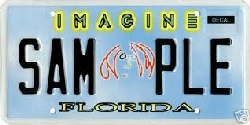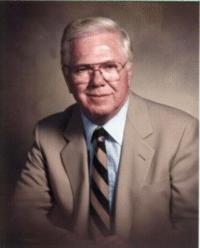 I recently snuck away for a little fly fishing in North Carolina with a couple of friends who happen to be illustrators, very respectable ones I might add. One is a personal friend I have known for many years and although we have different professional backgrounds, we inevitably talk about business. The art industry is a highly competitive field, probably because colleges have been churning out a glut of artists, illustrators, and graphic designers over the years. Compounding the problem is the computer which greatly leverages the ability of even the most mediocre talent. Frankly though, companies do not care whether a piece of artwork was created by hand or with computer assistance. They just want a graphic which will enhance an article, a magazine, a book, or whatever. This means the graphics business is not just competitive, but fiercely so.
I recently snuck away for a little fly fishing in North Carolina with a couple of friends who happen to be illustrators, very respectable ones I might add. One is a personal friend I have known for many years and although we have different professional backgrounds, we inevitably talk about business. The art industry is a highly competitive field, probably because colleges have been churning out a glut of artists, illustrators, and graphic designers over the years. Compounding the problem is the computer which greatly leverages the ability of even the most mediocre talent. Frankly though, companies do not care whether a piece of artwork was created by hand or with computer assistance. They just want a graphic which will enhance an article, a magazine, a book, or whatever. This means the graphics business is not just competitive, but fiercely so.
Within the art world, there is a multitude of awards for excellence at the local, regional, and national levels, even some international awards. All are considered prestigious to a certain degree, some more than others, and artists and illustrators regularly enter their work in hopes of gaining some recognition. In particular, young people crave such awards in the hopes it will boost their career and look good on a resume. As my illustrator friends were quick to point out, such awards may be useful for stroking one's ego, but they certainly do not put food on the table. Consequently, it is not uncommon for winners of such awards to bypass award presentations as they are more focused on their next job.
You typically find more awards in the arts as opposed to the sciences, even though they have their fair share as well. Instead, sciences rely more on certifications denoting a person is properly skilled to perform a certain task. Whereas, awards stroke the ego, certificates offer prima facie evidence of your qualifications. It means you have passed certain tests of workmanship.
As my friends correctly pointed out, your job performance is more important than any award you can win. The applause of your customers is much more important than winning the esteem of your critics and contemporaries. Satisfied customers represent repetitive business and a more consistent cash flow. They also make better references than any award.
If you find yourself being squeezed between working on a billable job and winning an award, don't think twice about it, take the money and run. Your work is much more important than any award.
Keep the Faith!
Note: All trademarks both marked and unmarked belong to their respective companies.
 Tim Bryce is a writer and the Managing Director of M. Bryce & Associates (MBA) of Palm Harbor, Florida and has over 30 years of experience in the management consulting field. He can be reached at timb001@phmainstreet.com
Tim Bryce is a writer and the Managing Director of M. Bryce & Associates (MBA) of Palm Harbor, Florida and has over 30 years of experience in the management consulting field. He can be reached at timb001@phmainstreet.com
For Tim's columns, see:
http://www.phmainstreet.com/timbryce.htm
Like the article? TELL A FRIEND.
Tune into Tim's THE BRYCE IS RIGHT! podcast Mondays-Fridays, 7:30am (Eastern).
Copyright © 2011 by Tim Bryce. All rights reserved.
 For many years, automobile license plates came in basically two colors. Each plate listed the state name at the top, the tag number in the middle, and perhaps a state motto on the bottom, such as "Land of Lincoln" (IL), "Constitution State" (CT), "Empire State" (NY), "Sunshine State" (FL), etc. That was it; simple and easy to read. Somewhere along the way though, license plates evolved into sophisticated bumper stickers which allowed their owners to proudly make a statement of some kind to the world. It started with vanity plates where the owner could pay a little extra to arrange the characters on the license plate to their liking. For example, since the "PRIDE" methodology was our main product for many years, we had an Ohio license plate made with the word printed on it. As nice as our plate looked, it was still nothing more than blue letters on white, or white on green (depending on the year we reordered it).
For many years, automobile license plates came in basically two colors. Each plate listed the state name at the top, the tag number in the middle, and perhaps a state motto on the bottom, such as "Land of Lincoln" (IL), "Constitution State" (CT), "Empire State" (NY), "Sunshine State" (FL), etc. That was it; simple and easy to read. Somewhere along the way though, license plates evolved into sophisticated bumper stickers which allowed their owners to proudly make a statement of some kind to the world. It started with vanity plates where the owner could pay a little extra to arrange the characters on the license plate to their liking. For example, since the "PRIDE" methodology was our main product for many years, we had an Ohio license plate made with the word printed on it. As nice as our plate looked, it was still nothing more than blue letters on white, or white on green (depending on the year we reordered it).  Back in 1962, President Kennedy challenged the country to put a man on the moon by the end of the decade, and by doing so he established a national objective for us to aspire to. We met that goal and won the space race. In the process, we created new technologies, industries, jobs, and promoted education in the process. Basically, it reinvigorated the country, bringing us out of the doldrums, and created a boom-time in business. It was a win-win scenario all around, but that was then, this is now. Today, the space program is considered passé and the country is experiencing economic stagnation. Frankly, we don't know where we are going anymore, except possibly in circles.
Back in 1962, President Kennedy challenged the country to put a man on the moon by the end of the decade, and by doing so he established a national objective for us to aspire to. We met that goal and won the space race. In the process, we created new technologies, industries, jobs, and promoted education in the process. Basically, it reinvigorated the country, bringing us out of the doldrums, and created a boom-time in business. It was a win-win scenario all around, but that was then, this is now. Today, the space program is considered passé and the country is experiencing economic stagnation. Frankly, we don't know where we are going anymore, except possibly in circles. It is an undocumented fact that the last 1% of anything takes longer than the other 99%. There are plenty of examples to support this argument, perhaps none quite as visible as the progress bars we see on computers. You know, those little bars telling you how you are progressing in the installation of software or the execution of a program. More often than not, such progress bars seem to race through the first 99% like a blazing track star, yet when we get to that last 1% it seems to slow down to a snail's pace.
It is an undocumented fact that the last 1% of anything takes longer than the other 99%. There are plenty of examples to support this argument, perhaps none quite as visible as the progress bars we see on computers. You know, those little bars telling you how you are progressing in the installation of software or the execution of a program. More often than not, such progress bars seem to race through the first 99% like a blazing track star, yet when we get to that last 1% it seems to slow down to a snail's pace. Over the years I have been fortunate to have had a handful of people I could genuinely call "True Friends." To me, there is a difference between having "friends" and those considered True Friends. A True Friend is someone who not only shares your interests, but has a personality very compatible with your own. So much so, you are not afraid to share your personal thoughts and problems with him/her and respect their opinion. You laugh together, play together, share troubles together, and sometimes work together. In this respect, a True Friend becomes an extended part of your family. He/she may not be your spouse, but a True Friend will know you almost as well. True Friends serve an important purpose for our soul, to be a sounding board for our triumphs, our failures and frustrations, our sense of right and wrong, our insecurities, and our ambitions. From a self analysis perspective, a True Friend is vital to help satisfy our desire for guidance and approval. Such a sounding board is invaluable to our mental well-being. Family is one thing, True Friends are something else. The fact that a person comes from outside the family circle means they will have a different perspective and will offer you a fresh point-of-view that you will probably not find in your natural family.
Over the years I have been fortunate to have had a handful of people I could genuinely call "True Friends." To me, there is a difference between having "friends" and those considered True Friends. A True Friend is someone who not only shares your interests, but has a personality very compatible with your own. So much so, you are not afraid to share your personal thoughts and problems with him/her and respect their opinion. You laugh together, play together, share troubles together, and sometimes work together. In this respect, a True Friend becomes an extended part of your family. He/she may not be your spouse, but a True Friend will know you almost as well. True Friends serve an important purpose for our soul, to be a sounding board for our triumphs, our failures and frustrations, our sense of right and wrong, our insecurities, and our ambitions. From a self analysis perspective, a True Friend is vital to help satisfy our desire for guidance and approval. Such a sounding board is invaluable to our mental well-being. Family is one thing, True Friends are something else. The fact that a person comes from outside the family circle means they will have a different perspective and will offer you a fresh point-of-view that you will probably not find in your natural family. Ivan Pavlov was a Russian physiologist who is best remembered for his work on "conditioned reflex" in the later part of the 19th century and early 20th century. His work was primarily concerned with modifying behavior based on repetitive conditioning. His experiments are still well known, particularly with dogs where he observed they began to salivate the moment food was introduced, but he also performed similar experiments on children with similar success. Pavlov's work was well regarded by the young Soviet government, including Lenin who saw the value of his experiments. His behavioral research led to such things as memory implantation and brainwashing.
Ivan Pavlov was a Russian physiologist who is best remembered for his work on "conditioned reflex" in the later part of the 19th century and early 20th century. His work was primarily concerned with modifying behavior based on repetitive conditioning. His experiments are still well known, particularly with dogs where he observed they began to salivate the moment food was introduced, but he also performed similar experiments on children with similar success. Pavlov's work was well regarded by the young Soviet government, including Lenin who saw the value of his experiments. His behavioral research led to such things as memory implantation and brainwashing. Among the nonprofit organizations I belong to, there is one where I serve as secretary of the local branch. Like any nonprofit, there are records to be maintained, dues notices to be issued, reports to be filed with headquarters, minutes to be taken, and different mailings made to the membership. It's not exactly rocket science. When I assumed office, I implemented a data base management system (DBMS) to track membership records and generate reports and mailing labels. I also send as much documentation as possible by e-mail in order to save money on postage and printing costs. All of this has saved us considerable time, effort, and money.
Among the nonprofit organizations I belong to, there is one where I serve as secretary of the local branch. Like any nonprofit, there are records to be maintained, dues notices to be issued, reports to be filed with headquarters, minutes to be taken, and different mailings made to the membership. It's not exactly rocket science. When I assumed office, I implemented a data base management system (DBMS) to track membership records and generate reports and mailing labels. I also send as much documentation as possible by e-mail in order to save money on postage and printing costs. All of this has saved us considerable time, effort, and money. Many years ago I devised a framed poster for my father, Milt Bryce, which I presented him at Christmas. I entitled it "Bryce's Laws," which was patterned after "Murphy's Laws." In it, I listed the many axioms he had coined over the years pertaining to systems, management, and other technical concepts. The poster delighted not only my father, but our customers as well who quickly snapped up the copies we produced. Since then,
Many years ago I devised a framed poster for my father, Milt Bryce, which I presented him at Christmas. I entitled it "Bryce's Laws," which was patterned after "Murphy's Laws." In it, I listed the many axioms he had coined over the years pertaining to systems, management, and other technical concepts. The poster delighted not only my father, but our customers as well who quickly snapped up the copies we produced. Since then,  I have long been a proponent of flattening the federal government, a beast I consider to be overbearing and out of control. I tend to see it more as an albatross around our necks impeding progress as opposed to expediting and simplifying our lives. I have written on this subject many times in the past, even offering some suggestions on how to flatten it, such as,
I have long been a proponent of flattening the federal government, a beast I consider to be overbearing and out of control. I tend to see it more as an albatross around our necks impeding progress as opposed to expediting and simplifying our lives. I have written on this subject many times in the past, even offering some suggestions on how to flatten it, such as,  Even if you are not a fan of the president's ability to manage and lead the nation, you have to admire his political chutzpah. Even in the face of socioeconomic disaster and sagging numbers in the polls, he has the uncanny ability to make people believe in his convoluted vision of America. Now that the 2012 U.S. elections are just thirteen months away, he has crafted a diabolical strategy whereby he has repackaged his failed ideas into new proposals even when the Republicans admonish him, "The Emperor has no clothes!"
Even if you are not a fan of the president's ability to manage and lead the nation, you have to admire his political chutzpah. Even in the face of socioeconomic disaster and sagging numbers in the polls, he has the uncanny ability to make people believe in his convoluted vision of America. Now that the 2012 U.S. elections are just thirteen months away, he has crafted a diabolical strategy whereby he has repackaged his failed ideas into new proposals even when the Republicans admonish him, "The Emperor has no clothes!" I had a young friend recently ask me for advice on a critical sales presentation he was getting ready to make. He had prepared a good graphical presentation on the computer, but was still a little squeamish about speaking in front of a group of people. Knowing I had been through this many times in my career, he asked for some advice. My first question to him was, "How well do you know your subject?"
I had a young friend recently ask me for advice on a critical sales presentation he was getting ready to make. He had prepared a good graphical presentation on the computer, but was still a little squeamish about speaking in front of a group of people. Knowing I had been through this many times in my career, he asked for some advice. My first question to him was, "How well do you know your subject?"